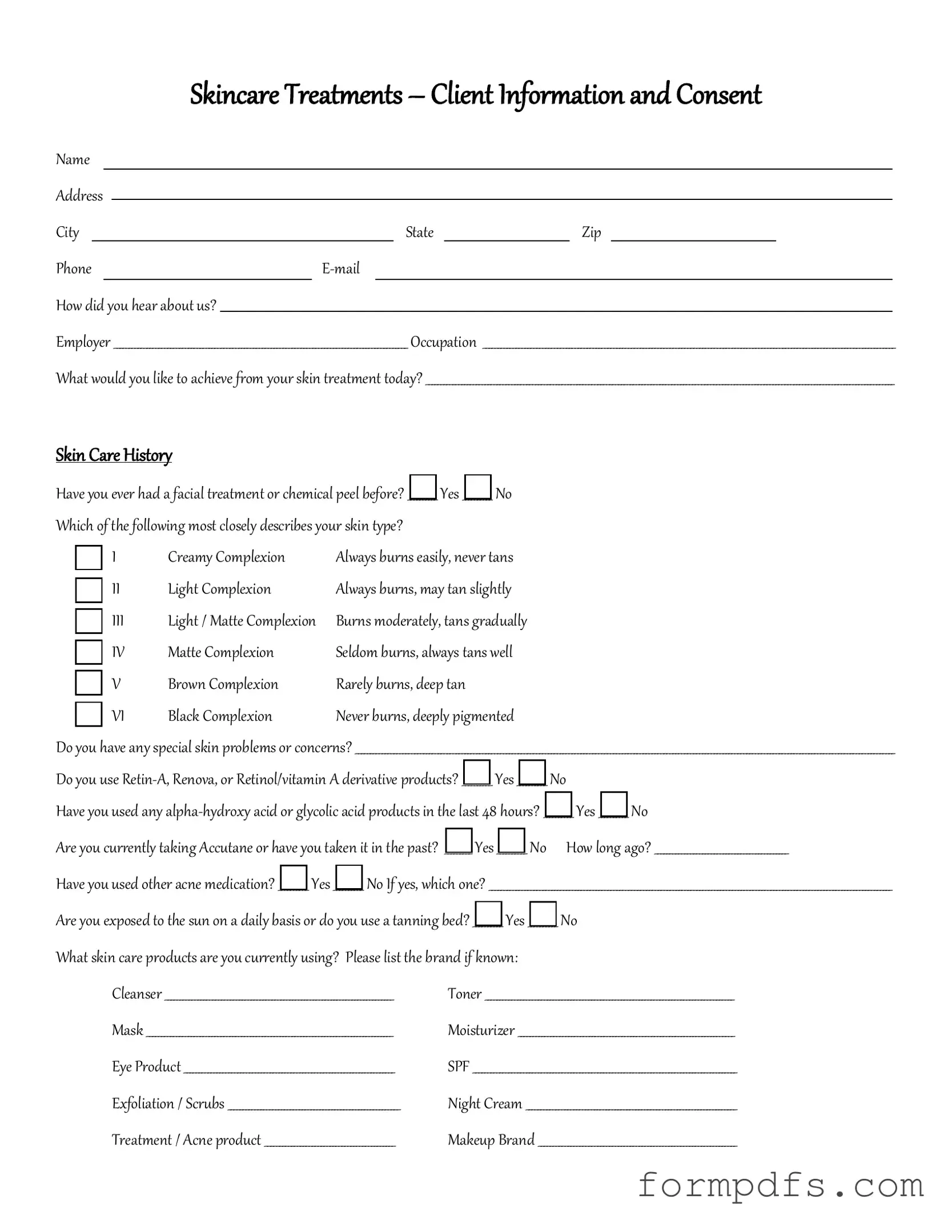What is a Facial Consent form?
A Facial Consent form is a document that clients sign before receiving facial treatments. It outlines the procedures involved, potential risks, and the client's agreement to proceed with the treatment. This form helps ensure that clients are informed and aware of what to expect during their facial treatment.
Why do I need to sign a Facial Consent form?
Signing the Facial Consent form is important for several reasons. It protects both the client and the service provider. By signing, you acknowledge that you understand the treatment, its risks, and any aftercare instructions. This helps prevent misunderstandings and ensures that you are making an informed decision.
What information is typically included in the Facial Consent form?
The form usually includes details about the specific facial treatment, a list of potential risks and side effects, contraindications, and aftercare recommendations. It may also ask for your medical history, allergies, and any medications you are currently taking to ensure your safety during the procedure.
Can I refuse to sign the Facial Consent form?
Yes, you can refuse to sign the Facial Consent form. However, without your signature, the service provider may not be able to perform the facial treatment. It’s essential to discuss any concerns you have with the provider before making a decision.
What should I do if I have questions about the Facial Consent form?
If you have questions or concerns about the Facial Consent form, it’s crucial to ask the service provider for clarification. They should be willing to explain the treatment, risks, and any other information you need to feel comfortable before signing.
Is the Facial Consent form legally binding?
Yes, the Facial Consent form is considered a legal document. By signing it, you agree to the terms outlined in the form. However, it is important to note that it does not waive your rights to seek compensation in case of negligence or harm resulting from the treatment.
What happens if I experience a negative reaction after the treatment?
If you experience a negative reaction after your facial treatment, it is essential to contact the service provider immediately. They can provide guidance on how to manage the reaction and may recommend further treatment if necessary. Keep in mind that the Facial Consent form outlines potential risks, but it does not eliminate the possibility of an adverse reaction.
Do I need to fill out a new Facial Consent form for every treatment?
Generally, you may need to fill out a new Facial Consent form for each treatment, especially if the procedures differ or if there have been changes to your medical history. Some providers may keep your information on file for a specific period, but it’s always best to check with them.
What if I change my mind after signing the Facial Consent form?
If you change your mind after signing the Facial Consent form, you should communicate your decision to the service provider as soon as possible. They will respect your choice and may discuss alternative options or reschedule your appointment for a later date.
Are there any age restrictions for signing the Facial Consent form?
Yes, age restrictions may apply. Typically, individuals under the age of 18 may require a parent or guardian to sign the Facial Consent form on their behalf. It’s essential to check with the service provider regarding their specific policies on age and consent.
